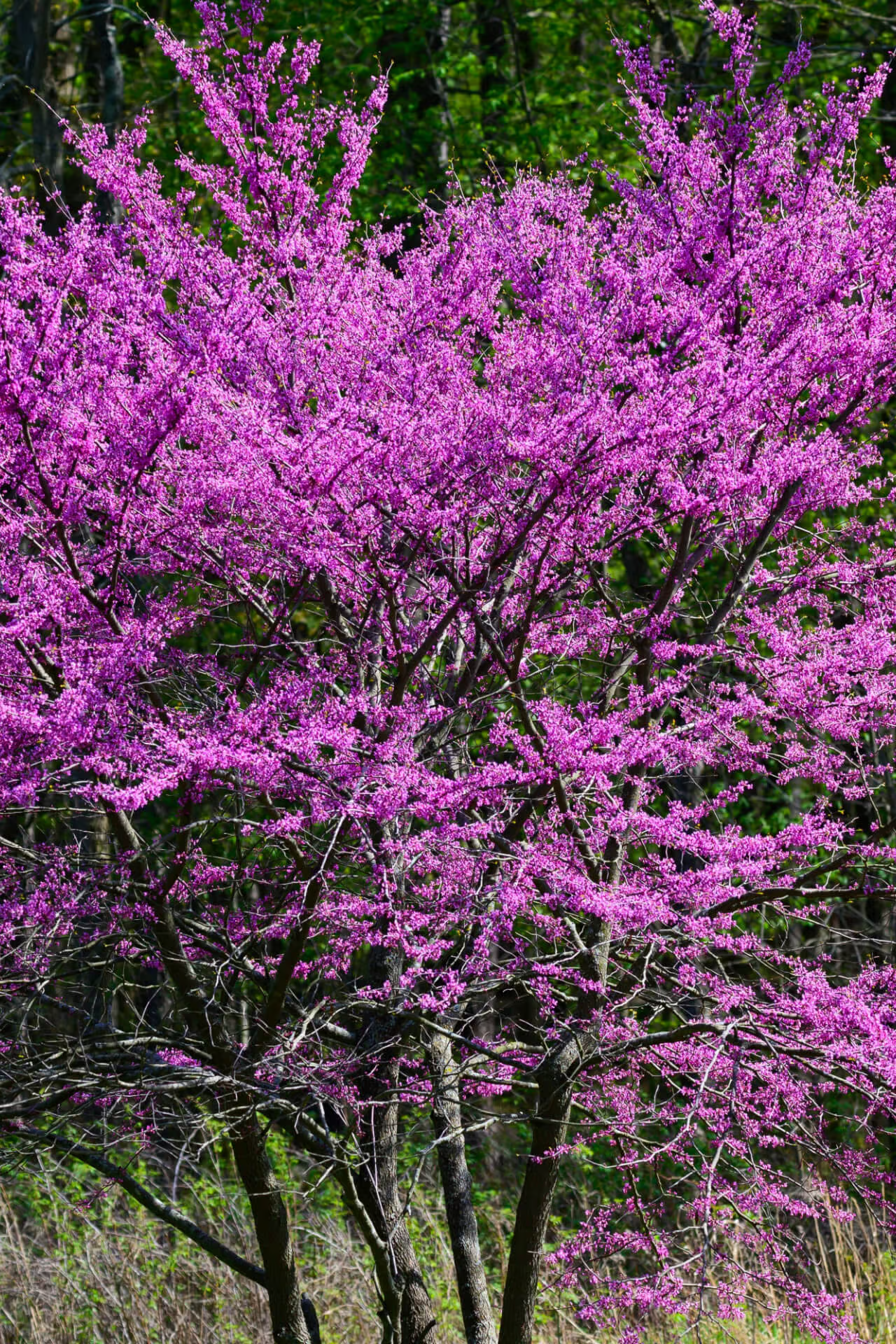
Perennials
Beautiful, vibrant springtime blooms
Great for small and medium spaces
Provides stunning fall foliage color
Thrives in
ZONE 4ZONE 5ZONE 6ZONE 7ZONE 8ZONE 9Planting Season:
Nov-AprilThe Redbud Tree has heart-shaped leaves and delicate purple-lilac colored blooms in early Spring, making this a family favorite. They are hardy in most areas and can tolerate sun or shade. It is a beloved and visually captivating addition to landscaping due to its remarkable aesthetic appeal and various benefits. Native to North America, this deciduous type is often sought after for its ornamental attributes, making it a popular choice for homeowners, urban planners, and landscape designers.
The tree is an excellent specimen plant that brings beauty to lawns, gardens, parks, and borders. Its vibrant spring blooms, lush green summer foliage, and intriguingly varied branches provide seasonal interest and texture. It can transform a landscaping design into a stunning focal point when paired with flowering annuals, perennials, and other shrubs.
This showy shrub bursts through with beautiful blooms in early spring. The flowers are about ½ inches wide and form clusters along the branches. Flower clusters range from light to deep pink and purple, and they can also be white. Heart-shaped leaves appear after blooming, lasting up to three weeks.
Leaves are about two to six inches in width. They start as light red and progressively become bright green over the summer. In the fall, they become a greenish-yellow hue and can contain hints of red and orange. Next, flat pod-like leaves appear. Pods are about two to four inches in length. They start as light green and become deep brown as they mature over the winter. Seeds inside the pods can re-propagate after falling to the ground.
Redbud Tree has a multi-trunk shape that divides near the ground. Multiple limbs and branches extend outward in a graceful manner. This offers a touch of landscaping interest and color extension. The brown bark is typically smooth and bare when young. The bark becomes scaly and turns dark gray as it matures. The bark is smooth and ranges from brown to light gray throughout the year. In winter, the bark becomes scaly with deep cracks. Flowers can sometimes bloom along the limbs and trunk. Called “cauliflory,” this adds a unique element to the garden aesthetic.
Incredibly versatile, a Redbud Tree ranges in size from a shrub to a tiny sapling. With an average height expectancy of 20 to 30 feet and limbs and branches that can spread up to 35 feet in width, they offer a variety of landscaping possibilities. Considered an understory, meaning it grows between taller varieties and the ground, it provides habitat and environmental benefits and a colorful and textual addition to the landscape.

Bloom Season
Spring
Bloom/Foliage Color
Pink
Height at Maturity
Over 25 Feet
Care
Redbud trees prefer well-drained soil and benefit from regular watering, specifically during dry times. They should be trimmed to retain shape and clear dead limbs. In early spring, they should be fertilized. They are relatively low-maintenance and resistant to pests.
Plant Reproduction
Redbud Tree spreads by seed dispersal and root suckering.
Plant bare root trees during the dormant season in early spring or late fall (November through April). Dig the hole twice as wide as the roots so the soil is well-drained. Position the tree so the root flare is at or just above ground level. Fill the hole back with the soil you dug from and water. Maintain soil moisture, especially in the tree's early years, by providing deep, regular watering. Apply a 2-4 inch mulch away from the trunk at the base to retain moisture and suppress weeds. Prune trees during the first few seasons to establish strength and resilience, remove damaged branches, and continue maintenance pruning as the tree matures. Regularly inspect for pests and diseases and apply integrated pest management practices. Protect young trees from mechanical damage and extreme temperatures with tree guards, and stake them if necessary for support, removing the stakes after one or two years.
Shipping date depends on the date displayed and chosen when you order from the product's page.
We only accept returns on plants verified dead. If you think your plants have died, we offer a 1 year warranty, please use use this File a Claim Link to verify dead plants and start with return warranty process.




Beautiful Spring Blooms:
Delicate purple-lilac flowers in early spring create a stunning display.
Heart-Shaped Leaves:
Leaves change from red to green, then to fall colors of yellow and orange.
Graceful Multi-Trunk Structure:
Spreading branches and multiple trunks enhance garden texture and appeal.
Unique Cauliflory:
Flowers can bloom along limbs and trunk, adding visual interest.
Caring Tips
Each box contains detailed care instructions and information about your product. But here's the basics.
Care Tips
Redbud trees prefer well-drained soil and benefit from regular watering, specifically during dry times. They should be trimmed to retain shape and clear dead limbs. In early spring, they should be fertilized. They are relatively low-maintenance and resistant to pests.
Light Requirements
The Redbud Tree flourishes in complete sun to shade. For best growth and flowering, it favors 4 to 6 hours of total sunlight daily. In hotter climates, some afternoon shade can help prevent leaf scorch.
Hardy Planting Zones
4 • 5 • 6 • 7 • 8 • 9
How often should I water my plants?
How do I know if my plant is getting too much or too little sunlight?
What should I do to prepare my plants for winter?
What are the signs that my plant needs fertilizing?
How can I prevent pests from damaging my plants?
How do I choose the right plant for my climate zone?